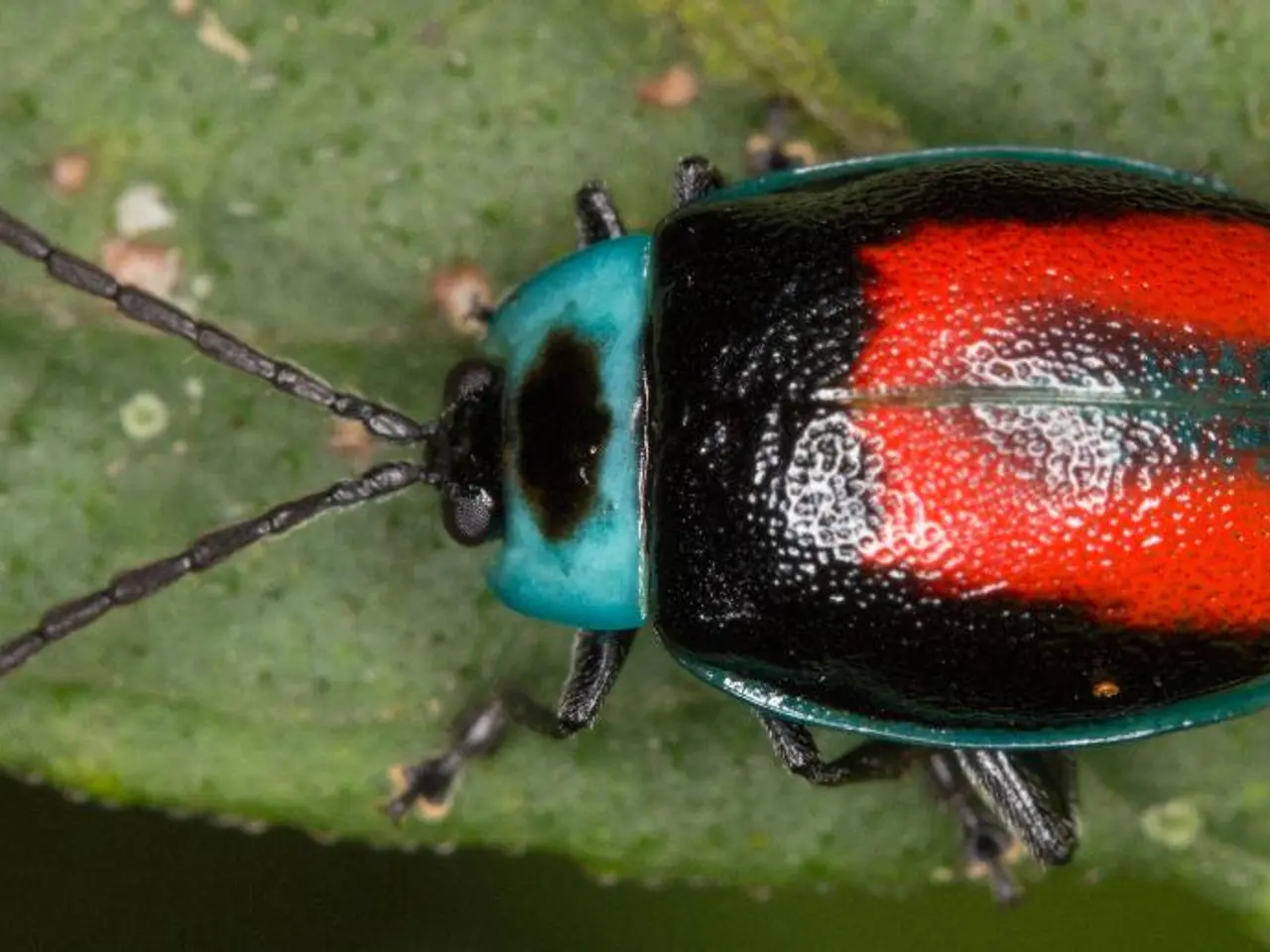Warning Signs of Plant Pests and Ailments to Keep an Eye On
Shrubs are a popular choice for many gardeners, but they can be susceptible to various diseases and pests. Understanding the common symptoms, causes, and recommended treatments or prevention methods can help keep your shrubs healthy and thriving.
Diseases
Blight
Blight is a common issue that can cause dark, irregular spots on leaves, stems, and fruit, leading to withering and dying plant parts. This disease can be of bacterial or fungal origin and thrives in humid conditions. Overhead watering can worsen it. Use a copper sulfate and lime mixture as a fungicide, prune affected parts, and water at the base to keep leaves dry. Improve air circulation to prevent blight [1].
Rust
Rust is a fungal disease that causes reddish-brown or orange powdery spots on leaf undersides and sometimes stems, leading to premature leaf drop. This disease favors damp, humid, and overcrowded conditions. Treatment includes using neem oil and water spray, removing infected leaves, and spacing plants properly to improve drainage [1].
Powdery Mildew
Powdery mildew is a fungal disease that appears as white, fuzzy growth on leaves and fruit. It spreads in warm, humid weather. Keeping the garden tidy, removing infected debris, and promoting airflow can help reduce its spread [2].
Downy Mildew
Downy mildew causes yellow or pale green spots on upper leaf surfaces with white, fuzzy growth underneath. This disease thrives in cool, humid conditions and is worsened by overhead watering and overcrowding. Treatment includes using a baking soda and water spray, avoiding leaf wetness during watering, and ensuring adequate air circulation [1].
Root Rot
Root rot, such as Phytophthora, causes yellow leaves, dying shoots, and mushy roots. It is caused by poor soil drainage and soggy soil conditions. Improve soil drainage, avoid waterlogged soils, and remove infected plants and roots to prevent root rot [2].
Apple Scab
Apple scab affects crabapples and shrubs similarly, causing olive green to black spots on leaves/fruit and premature leaf drop. Treatment includes raking and destroying fallen infected leaves, replacing susceptible species with resistant varieties, and maintaining drier conditions [5].
Pests
Azalea Lace Bug
Azalea lace bug feeding causes leaf stippling, yellowing, and browning. Treatment includes removing heavily infested shrubs and using horticultural oils or soaps with full coverage. Avoid using systemic insecticides when pollinators are active [4].
Cabbage White Butterfly (larvae)
Cabbage white butterfly larvae feed on leaves. Treatment includes using floating row covers to prevent egg-laying and hand-picking larvae from leaves [4].
Cucumber Beetles
Cucumber beetles cause foliage damage from feeding. Treatment includes using row covers early and selecting pesticides labeled for food crops if needed [4].
Flea Beetles
Flea beetles cause feeding damage on various crops. Treatment includes planting early to outgrow pressure, using row covers, interplanting with radishes as decoys, and spraying only for severe infestations, targeting radish tops [4].
General Preventative Measures and Treatments for Shrubs:
- Avoid overhead watering to reduce leaf wetness.
- Ensure good air circulation by proper plant spacing and pruning.
- Maintain garden sanitation by removing infected leaves, debris, and old plant material.
- Use organic or natural sprays like neem oil, baking soda solutions, copper sulfate mixtures, or horticultural oils depending on the issue.
- Improve soil drainage to prevent root diseases.
- Consider planting disease-resistant shrub varieties.
- Monitor regularly for early signs of pests and diseases to act promptly [1][2][4][5].
These approaches balance natural remedies and cultural controls to keep shrubs healthy while minimizing chemical use.
[1] University of California Agriculture and Natural Resources. (2021). Home & Garden Information Center. Retrieved from https://ucanr.edu/sites/mg/ [2] Cornell University Extension. (2021). Plant Disease Diagnostics Clinic. Retrieved from https://plantclinic.cornell.edu/ [3] North Carolina State University Extension. (2021). Plant Pathology. Retrieved from https://plants.ces.ncsu.edu/ [4] Penn State Extension. (2021). Entomology and Plant Pathology. Retrieved from https://extension.psu.edu/entomology-and-plant-pathology [5] Michigan State University Extension. (2021). Plant and Pest Diagnostics Laboratory. Retrieved from https://www.canr.msu.edu/news/plant_and_pest_diagnostics_laboratory




